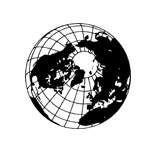”Sanovat sitä keinomäeksi”
Paloheinän ja Haltialan täyttömäet ratkaisuina Helsingin ylijäämämaaongelmaan
Nyckelord:
Helsinki, town planning, landfill, artificial hill, environment, sceneryAbstract
This article examines the planning of artificial hills in Helsinki between the early 1960s and the late 1970s. Following the rapid growth of the city, municipal authorities encountered problems with disposing of surplus wasteland. As the authorities had previously preferred to fill shallow bays and swamps around the city, new methods were required, because more emphasis was gradually placed on the preservation of the city’s shoreline and the scenery of Helsinki. While the first artificial hill at Paloheinä, constructed between 1965 and 1977, was initially planned to blend in with its environs, the dire need to dispose of more surplus land forced the municipal authorities to enlarge it. Following the prolonged construction of Paloheinä hill, the proposal for constructing a larger artificial hill in Haltiala in 1974 was opposed by local residents and administration itself. I argue that while the new artificial hills did not solve the problem of surplus land, they had a huge impact on the landfill policy of the city. The period studied needs to be understood thus as a trial period witnessing gradual yet crucial changes in the landfill policy in Helsinki.


.png)






